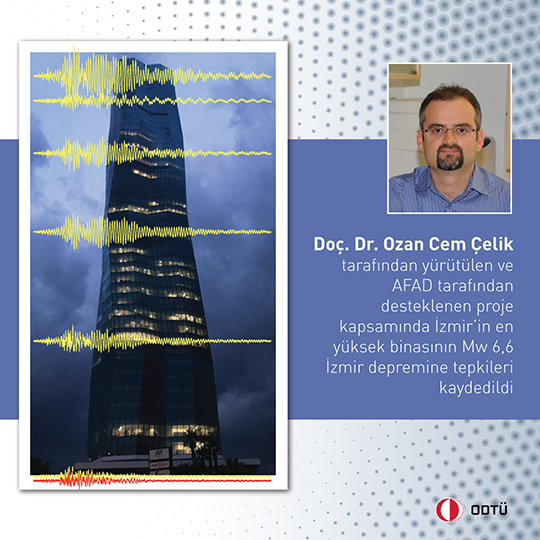October 30, 2020 Mw 6.6 Izmir Earthquake Response Records of the Tallest Building in Izmir by METU
- English
- Türkçe
The project led by METU Civil Engineering Department faculty member Assoc. Prof. Ozan Cem Çelik, entitled "Guidelines for Structural Health Monitoring Systems on Tall Buildings and a Case Study" is funded by the Disaster and Emergency Management Presidency (AFAD) under its National Earthquake Research Program.
Within the scope of the project, the response of the 216 m tall 48-story Mistral Izmir Office Tower, which is the tallest building in Izmir, during the Mw 6.6 Izmir earthquake, with epicenter 71 km away from the building, that took place on October 30, 2020 was recorded. These records are important in terms of being the first response records of a tall building in Türkiye during an earthquake of this proximity and magnitude.
METU has been monitoring the building and free-field vibrations in real time since January 27, 2019, with the 27-channel structural health monitoring system, which consists of accelerometers and digital recorders placed at various floors, and seven AFAD strong motion stations in the vicinity of the building.
2019 Turkish Building Earthquake Code requires real-time monitoring of the structural response of buildings of Earthquake Design Class 1 and 2 that are taller than 105 m. Structural health monitoring systems on these tall buildings will help quickly assess their safety and minimize downtime following earthquake events. AFAD guidelines regulating the installation and management of these systems was developed by two concurrent research projects that were undertaken by METU and Bogazici University. Within the scope of these projects, two tall buildings in Izmir and Istanbul, respectively, were instrumented as case studies per the new Code.

